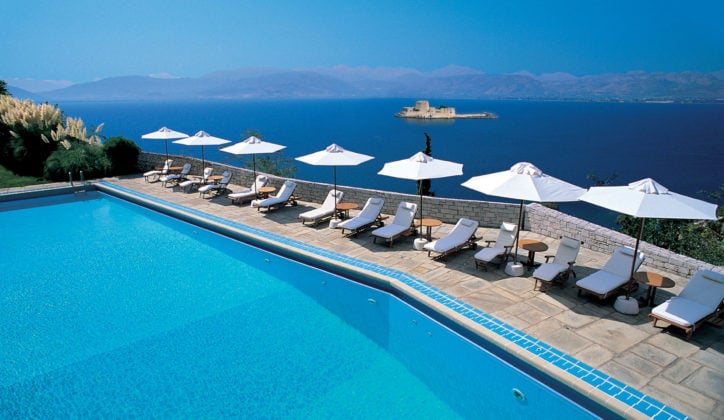The southern peninsular of Peloponnese, separated from the mainland by the Corinth Canal, encapsulates everything that is wonderful about Greece. It is both rich in culture and naturally beautiful.
A trip to Peloponnese is like diving straight into an interactive history book, its collection of temples, castles and palaces bringing the past to life. It was home to some of the most powerful rulers in ancient Greece, hosting the kingdoms of Agamemnon, Nestor and Menalaus. A game of pass the parcel saw the Peloponnese under Roman, Byzantine, Frankish and Ottoman rule until the Greek War of Independence in 1821. The city of Náfplio became the first capital of modern Greece before power drifted east to Athens.
Corinth is the gateway to the Peloponnese and while the modern-day city is more of a transport hub, the ancient city is well worth a visit. Head deeper into the peninsula and you’ll discover the 14,000-seat theatre of Epidaurus, which now hosts regular performances in the summer. Greek history continues to flourish in Mycenae; enter through the famous Lion Gate and visit the Homeric palaces of the mighty Agamemnon.
Olympia was the birthplace of the Olympic Games, and as you take your marks on the start line of the 200m track, imagine the roar of the crowds as they cheered on their favourite Olympians. The site is also home to the temples of Zeus and Hera and a museum that contains some of the finest Classical and Roman sculptures in the country.
One of the area’s most dramatic sites is that of Mystras, a ruined Byzantine city hugging the slopes of the Taïyetos mountains. Wind your way past haunting houses, palaces and churches with evocative faded frescoes. Venture further south to Mani, its tower houses and churches scattered around the jagged coastline and in between the mountains.
The Peloponnese isn’t just about ancient sites and historical monuments. The west coast beaches are some of the least developed in the country and the inland landscape of forested mountains, cut by valleys and gorges, is ripe for exploring.
When to go
There's pleasant weather conditions more or less throughout the year, though spring is one of the best times to head to the Peloponnese. The climate can be very pleasant, with temperatures gradually rising from April onwards. Summer is for sun worshippers, with temperatures in July and August known to head above 40°C, attracting the most tourists. In autumn, from September onwards, the crowds tend to east, with the sea staying warm ensuring that swimming remains pleasant into October.
What to do
- Marvel at the Theatre of Epidaurus, built in the 4th century BC
- Explore the archaeological sites of Mycenae and Tiryns
- Head to the birthplace of the Olympic Games at Olympia
- Discover the ruined Byzantine city of Mystras
- Visit the old towers of the Mani Peninsula
- Relax on the beaches of the Peloponnese Peninsula's west coast
Itineraries including Peloponnese
Accommodation in Peloponnese
Here are some of our travel designers' favourite options















